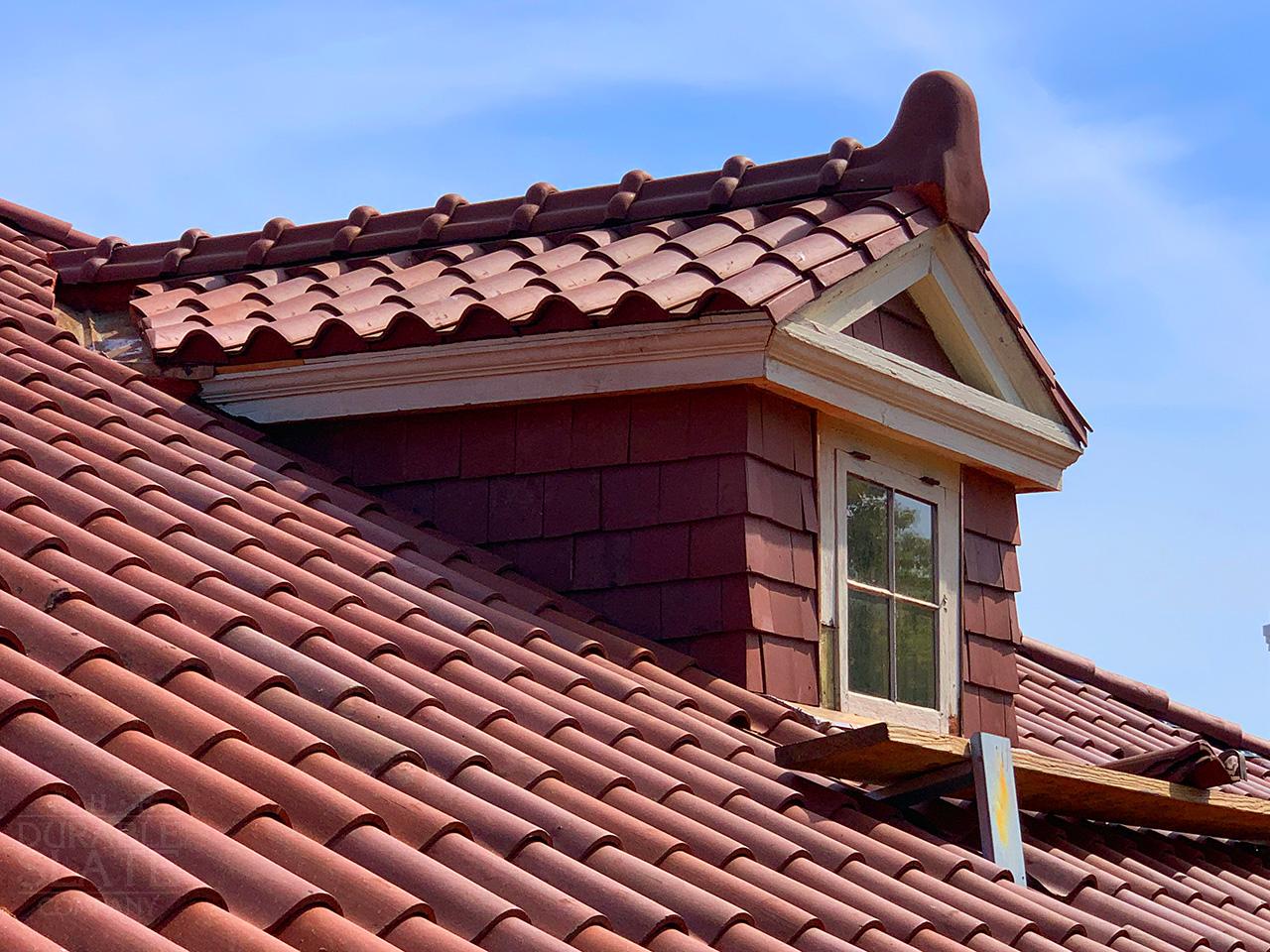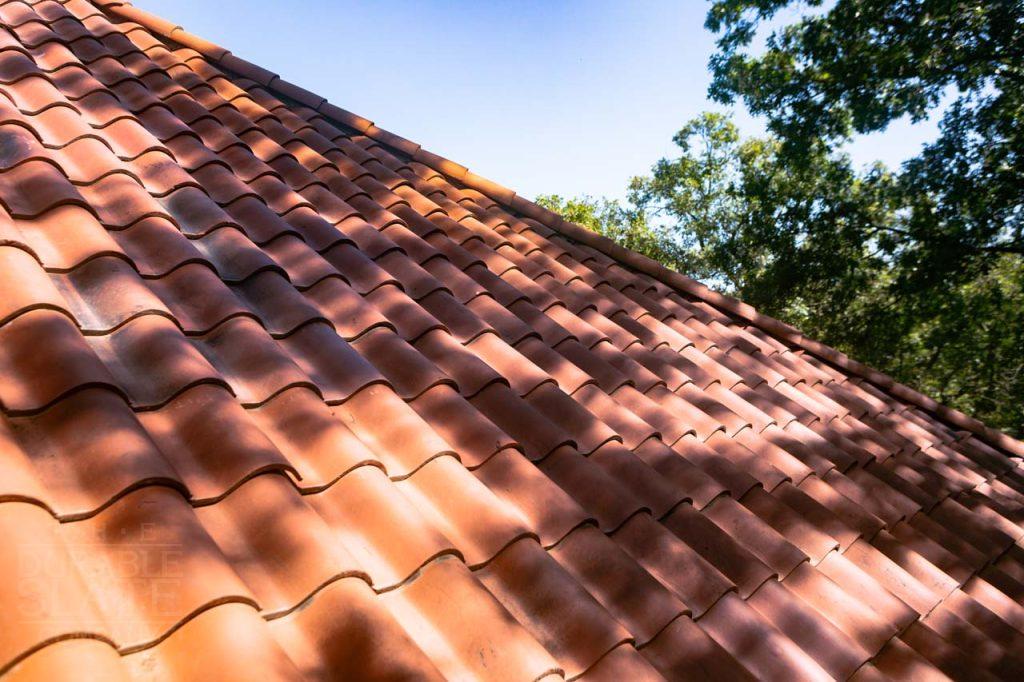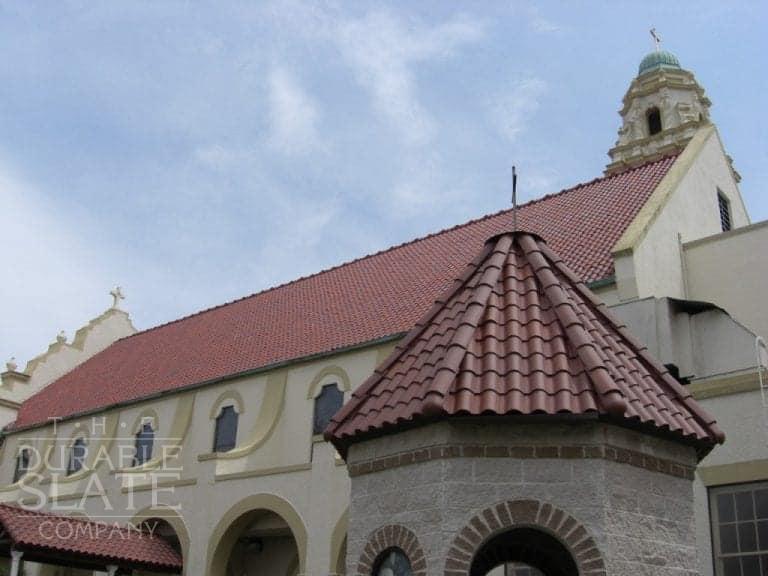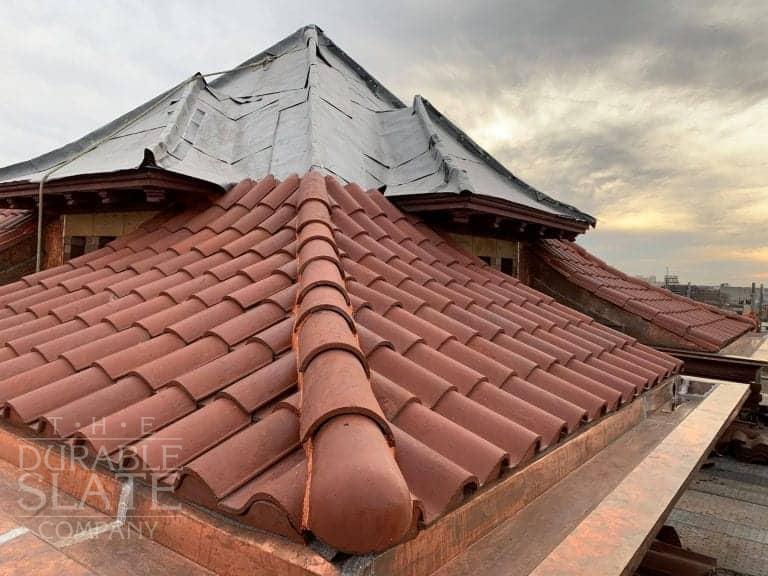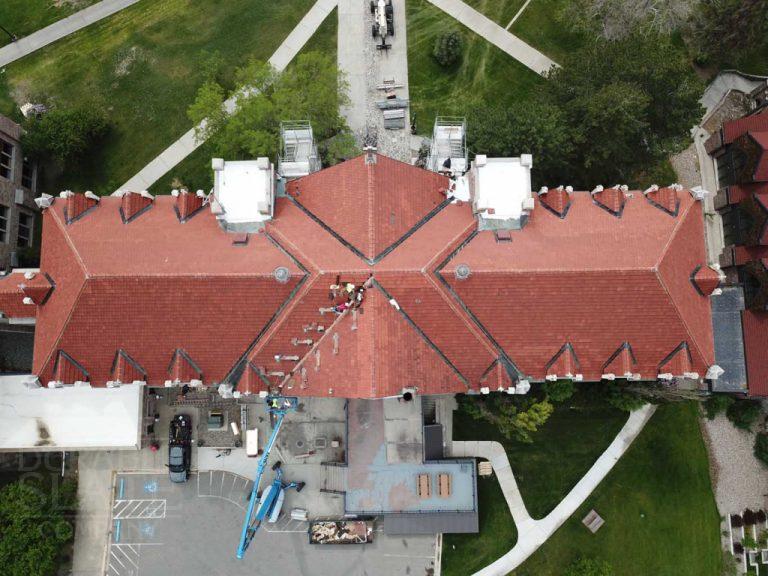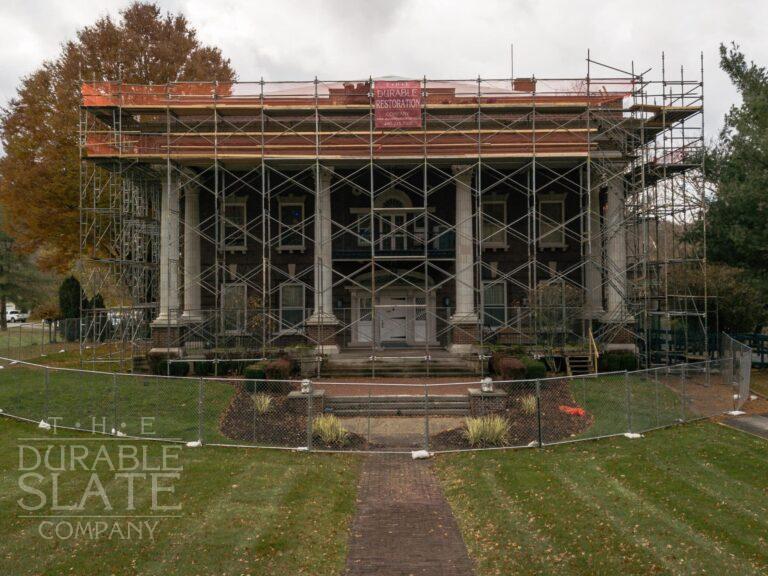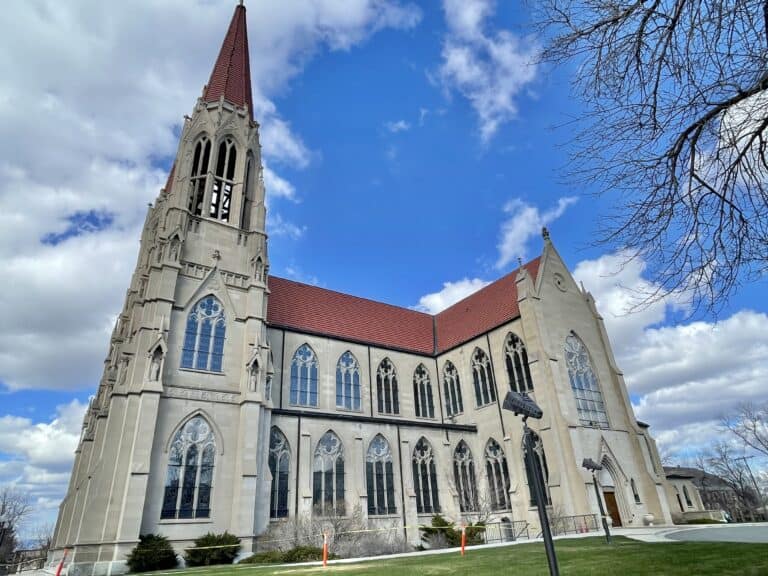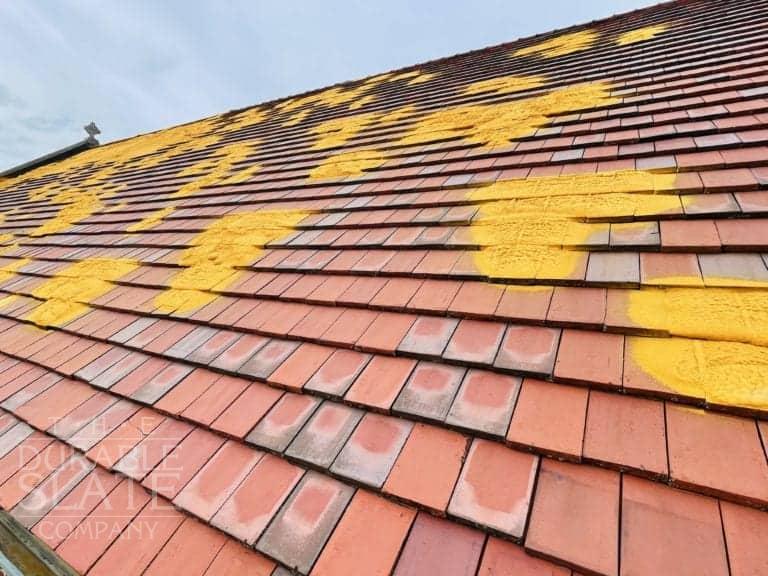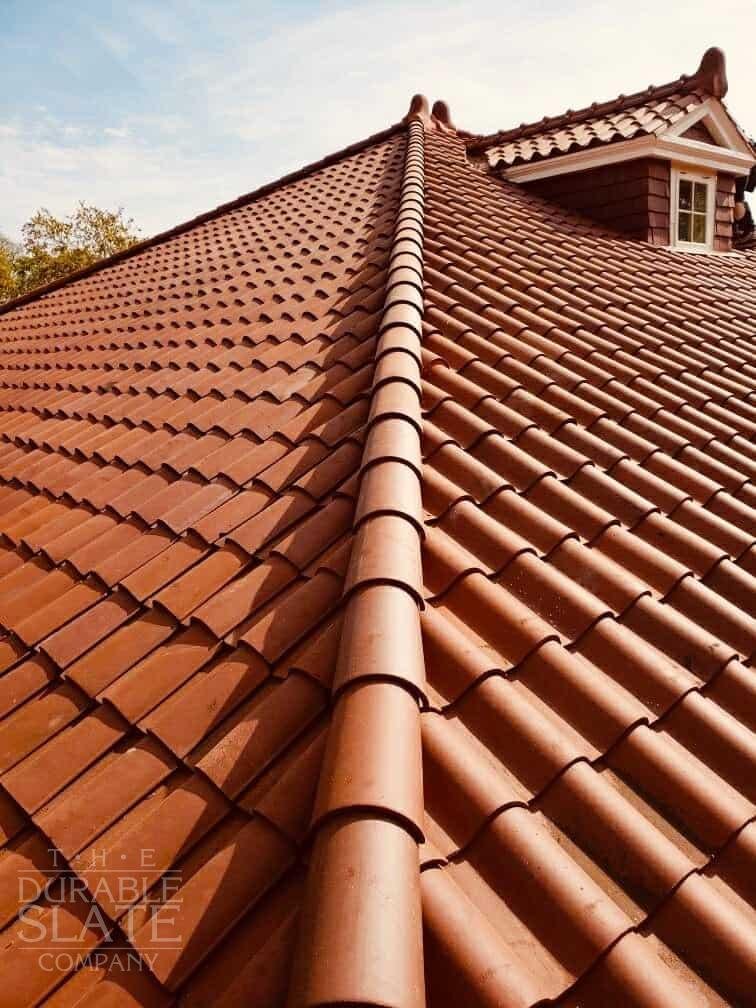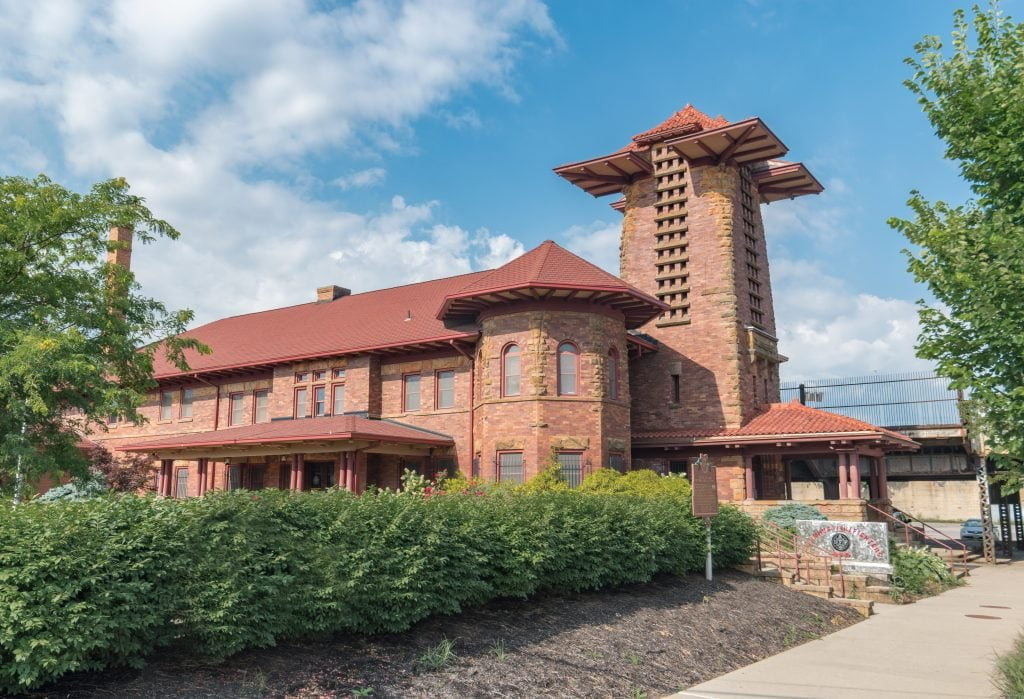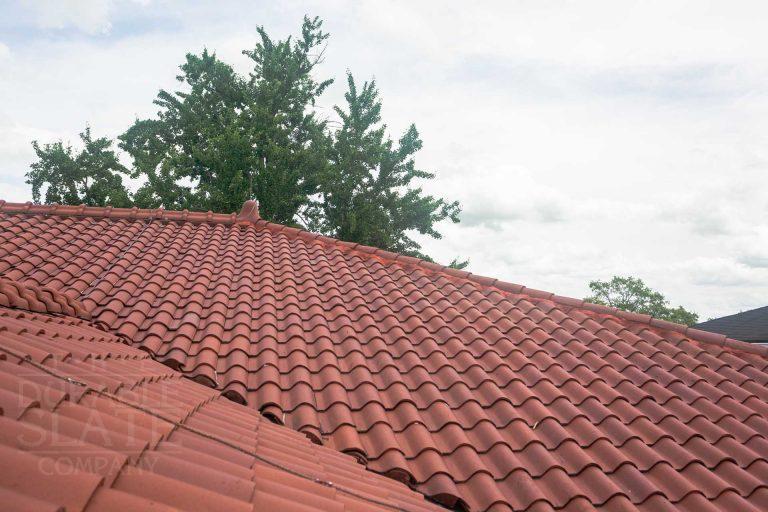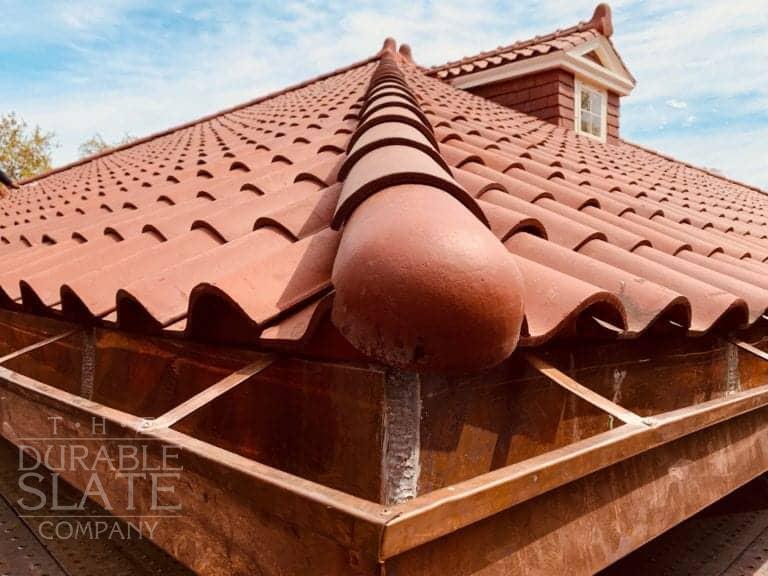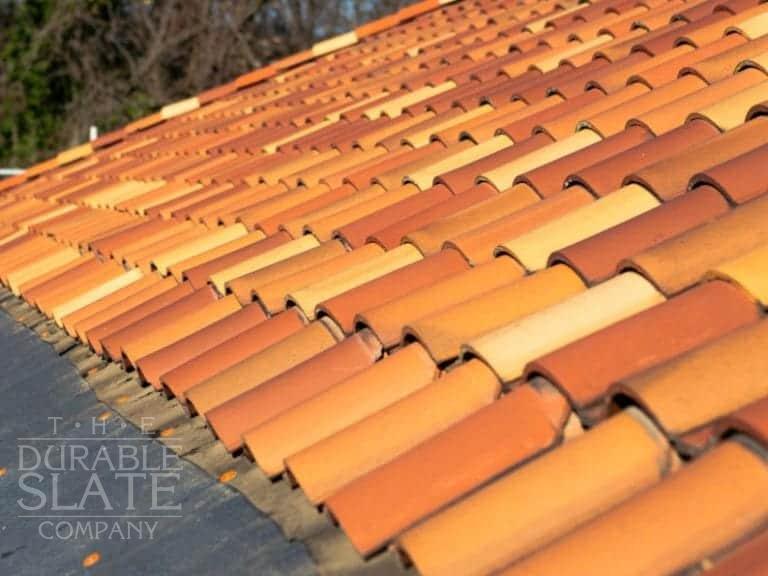Weighing the Strengths
Here are some of the pros and cons of S-style Spanish clay tiles, beginning with the positives:
Durability: S-style clay tiles are known for their durability and can last more than a century with proper maintenance. They are resistant to weathering, fire, and insects, making them a popular choice in areas with harsh climates.
Aesthetics: The distinct S-shape of Spanish tiles gives them a classic and timeless look that can enhance the beauty of any home. They come in a variety of colors and styles, allowing homeowners to choose a design that matches their personal taste.
Energy efficiency: Clay tiles have natural insulation properties that can help regulate the temperature inside a home, reducing energy consumption and saving homeowners money on utility bills.
Naturally, then, the cons include weight: Spanish clay tiles are heavier than other types of roofing materials, which can make installation more challenging and may require additional structural support for the roof.
Maintenance: Although clay tiles are durable, they require regular maintenance to ensure their longevity. This can include cleaning debris from the roof, inspecting for cracks or damage, and replacing broken tiles.
Compared to other types of clay roofing tiles, S-style Spanish clay tiles are generally more affordable and easier to install due to their interlocking design. However, they may not be as durable as other clay tiles like French tiles, which are thicker and more resistant to impact damage.
Against roofing slate, Spanish tiles are less expensive and more widely available. However, slate is more durable and can last over 100 years with proper maintenance. It also has a natural texture and color variations that give it a unique aesthetic appeal. Additionally, slate is much lighter than clay tiles, making it easier to install on certain types of roofs.
Most tile roofs are reliant on their underlayment to keep all of the water out of a building. Whereas a slate roof solely keeps the water out. Wind driven rain often gets under a tile roof and the underlayment protects the building from these types of strong storms.

